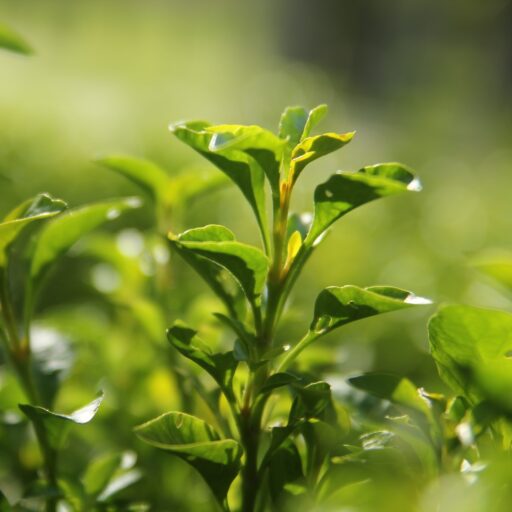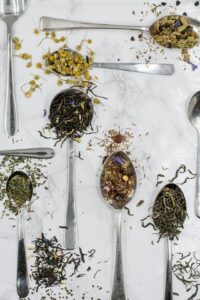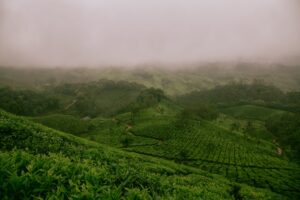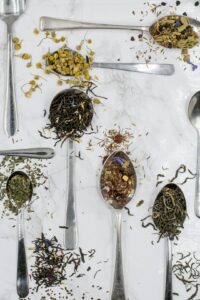Support our educational content for free when you purchase through links on our site. Learn more
Can I Grow My Own Tea Plants? [2023]
Quick Answer: Yes, you can grow your own tea plants! Growing tea plants can be a rewarding and enjoyable experience, allowing you to have a fresh supply of tea leaves right in your backyard. With the right conditions and care, you can cultivate tea plants and harvest your own leaves to make delicious tea. In this article, we will guide you through the process of growing tea plants, from selecting the right variety to caring for your plants and harvesting the leaves. So, let's dive in and discover the secrets of growing your own tea!
Table of Contents
- Quick Answer
- Quick Tips and Facts
- Selecting the Right Tea Plant Variety
- Preparing the Soil and Climate
- Planting and Caring for Tea Plants
- Pruning and Harvesting Tea Leaves
- Processing Tea Leaves
- FAQ
- Conclusion
- Recommended Links
- Reference Links
Quick Tips and Facts
- Tea plants (Camellia sinensis) are evergreen shrubs native to East Asia.
- The two main varieties of tea plants are Camellia sinensis var. sinensis (Chinese tea) and Camellia sinensis var. assamica (Indian tea).
- Tea plants prefer acidic soil with a pH between 4.5 and 6.0.
- They thrive in areas with a cool, humid climate and well-drained soil.
- Tea plants can be grown in containers or directly in the ground.
- It takes around three years for a tea plant to mature and produce leaves suitable for harvesting.
- The best time to harvest tea leaves is during the early morning when the leaves are young and tender.
- Tea leaves can be processed into various types of tea, including green, black, oolong, and white tea.
Selecting the Right Tea Plant Variety
To grow your own tea plants, you need to start by selecting the right variety. The two main varieties of tea plants are Camellia sinensis var. sinensis (Chinese tea) and Camellia sinensis var. assamica (Indian tea). Here are some key differences between the two:
| Variety | Description |
|---|---|
| Chinese Tea (Camellia sinensis var. sinensis) | – Smaller leaves and bushes – Thrives in cooler climates – Preferred for green and white teas |
| Indian Tea (Camellia sinensis var. assamica) | – Larger leaves and bushes – Tolerates warmer climates – Preferred for black and oolong teas |
Pro Tip: If you're new to tea growing, we recommend starting with Chinese tea plants as they are generally easier to grow and maintain.
When selecting tea plants, look for healthy specimens with vibrant leaves. You can purchase tea plants from local nurseries or online suppliers. Make sure to choose plants that are suitable for your climate and growing conditions.
Shopping Links:
- Shop Chinese Tea Plants on Amazon
- Shop Indian Tea Plants on Amazon
Preparing the Soil and Climate
Tea plants thrive in acidic soil with a pH between 4.5 and 6.0. Before planting your tea plants, it's essential to prepare the soil properly. Here's how:
-
Test the soil: Use a soil testing kit to determine the pH level of your soil. If the pH is too high, you can lower it by adding organic matter such as compost or well-rotted manure.
-
Choose a suitable location: Tea plants prefer well-drained soil and partial shade. Select a location that receives morning sunlight and afternoon shade. Avoid areas with strong winds or extreme temperatures.
-
Amend the soil: If your soil is heavy or clayey, improve its drainage by adding organic matter. Mix in compost, peat moss, or perlite to create a loose and well-draining soil structure.
-
Mulch the soil: Apply a layer of organic mulch around the base of the tea plants to conserve moisture, suppress weeds, and regulate soil temperature.
Pro Tip: If you don't have suitable soil conditions, you can still grow tea plants in containers. Use a well-draining potting mix and choose a container large enough to accommodate the plant's root system.
Planting and Caring for Tea Plants
Once you have prepared the soil, it's time to plant your tea plants. Here's a step-by-step guide to help you get started:
-
Dig a hole: Dig a hole that is slightly larger than the root ball of the tea plant.
-
Place the plant: Gently place the tea plant in the hole, ensuring that the top of the root ball is level with the soil surface.
-
Backfill the hole: Fill the hole with soil, firming it gently around the roots. Avoid compacting the soil too much.
-
Water thoroughly: After planting, water the tea plant thoroughly to settle the soil and provide moisture to the roots.
-
Provide regular watering: Tea plants require regular watering, especially during dry periods. Keep the soil consistently moist but not waterlogged.
-
Fertilize appropriately: Use a balanced fertilizer formulated for acid-loving plants, such as rhododendron or azalea fertilizer. Apply it according to the package instructions.
-
Protect from frost: If you live in an area with frost, protect your tea plants by covering them with a frost cloth or bringing them indoors during winter.
Pro Tip: Tea plants benefit from regular pruning to maintain their shape and promote healthy growth. Prune in early spring before new growth emerges, removing any dead or damaged branches.
Shopping Links:
- Shop Rhododendron Fertilizer on Amazon
- Shop Azalea Fertilizer on Amazon
Pruning and Harvesting Tea Leaves
Pruning is an essential part of tea plant care, helping to maintain the plant's shape and encourage new growth. Here's how to prune your tea plants:
-
Prune in early spring: Prune your tea plants in early spring before new growth appears. Use clean and sharp pruning shears to make clean cuts.
-
Remove dead or damaged branches: Start by removing any dead, diseased, or damaged branches. Cut them back to healthy wood.
-
Maintain the desired shape: Prune the tea plant to maintain the desired shape and size. You can trim the top and sides to encourage bushier growth.
-
Harvesting tea leaves: Tea leaves can be harvested when they are young and tender. The best time to harvest is during the early morning when the leaves have the highest concentration of essential oils. Pluck the top two leaves and the bud, leaving the lower leaves to continue growing.
Pro Tip: Experiment with different harvesting techniques to find the method that works best for you. Some tea growers prefer to pluck individual leaves, while others opt for a "flush" method, where the entire top portion of the plant is harvested.
Processing Tea Leaves
After harvesting the tea leaves, they need to be processed to transform them into the familiar forms of tea such as green, black, oolong, or white tea. The processing methods vary depending on the type of tea you want to make. Here's a brief overview:
-
Green tea: Green tea is made by steaming or pan-frying the tea leaves to halt oxidation. This preserves the natural green color and fresh flavor of the leaves.
-
Black tea: Black tea undergoes a complete oxidation process. The leaves are withered, rolled, fermented, and dried to develop the characteristic dark color and robust flavor.
-
Oolong tea: Oolong tea is partially oxidized, resulting in a flavor profile between green and black tea. The leaves are withered, rolled, and partially fermented before being dried.
-
White tea: White tea is the least processed type of tea. The leaves are simply withered and dried, preserving their delicate flavor and appearance.
The specific processing methods for each type of tea can vary, and some teas may require additional steps such as rolling or shaping the leaves. It's recommended to follow a detailed guide or consult a tea expert to ensure the best results.
Shopping Links:
- Shop Green Tea Processing Equipment on Amazon
- Shop Black Tea Processing Equipment on Amazon
- Shop Oolong Tea Processing Equipment on Amazon
- Shop White Tea Processing Equipment on Amazon
FAQ
Can you grow tea plants in the US?
Yes, tea plants can be grown in the US! While tea cultivation is more commonly associated with countries like China, India, and Japan, it is possible to grow tea plants in the United States. The key is to select tea plant varieties that are suitable for your climate and provide the necessary care and growing conditions.
How hard is it to grow a tea plant?
Growing tea plants can be moderately challenging, but with the right knowledge and care, it is achievable for most gardeners. Tea plants have specific soil and climate requirements, and they require regular watering, fertilizing, and pruning. However, with dedication and attention to detail, you can successfully grow your own tea plants.
How long does it take to grow your own tea?
Tea plants take time to mature and produce leaves suitable for harvesting. It typically takes around three years for a tea plant to reach maturity and yield leaves of good quality. However, you can start harvesting small quantities of leaves after the first year of growth. Patience is key when growing tea, as the rewards are worth the wait.
Can you grow a tea plant from a tea bag?
While it is possible to grow a tea plant from a tea bag, the success rate can be quite low. Most commercial tea bags contain processed and finely ground tea leaves, which may not have the necessary viability to sprout. It is recommended to start with fresh tea seeds or young tea plants from reputable nurseries for better results.
Pro Tip: If you're interested in experimenting with growing tea plants from tea bags, try using loose-leaf tea or tea bags that contain whole tea leaves.
Conclusion
Growing your own tea plants can be a rewarding and enjoyable experience. With the right selection of tea plant variety, proper soil preparation, and regular care, you can cultivate your own tea leaves and create delicious teas right at home. Remember to be patient and enjoy the journey of tea cultivation. So why not give it a try and embark on your tea-growing adventure today?
Recommended Links
- Shop Tea Plants on Amazon
- Shop Tea Processing Equipment on Amazon
- Shop Tea Books on Amazon
- Explore more articles on Growing Teas™








